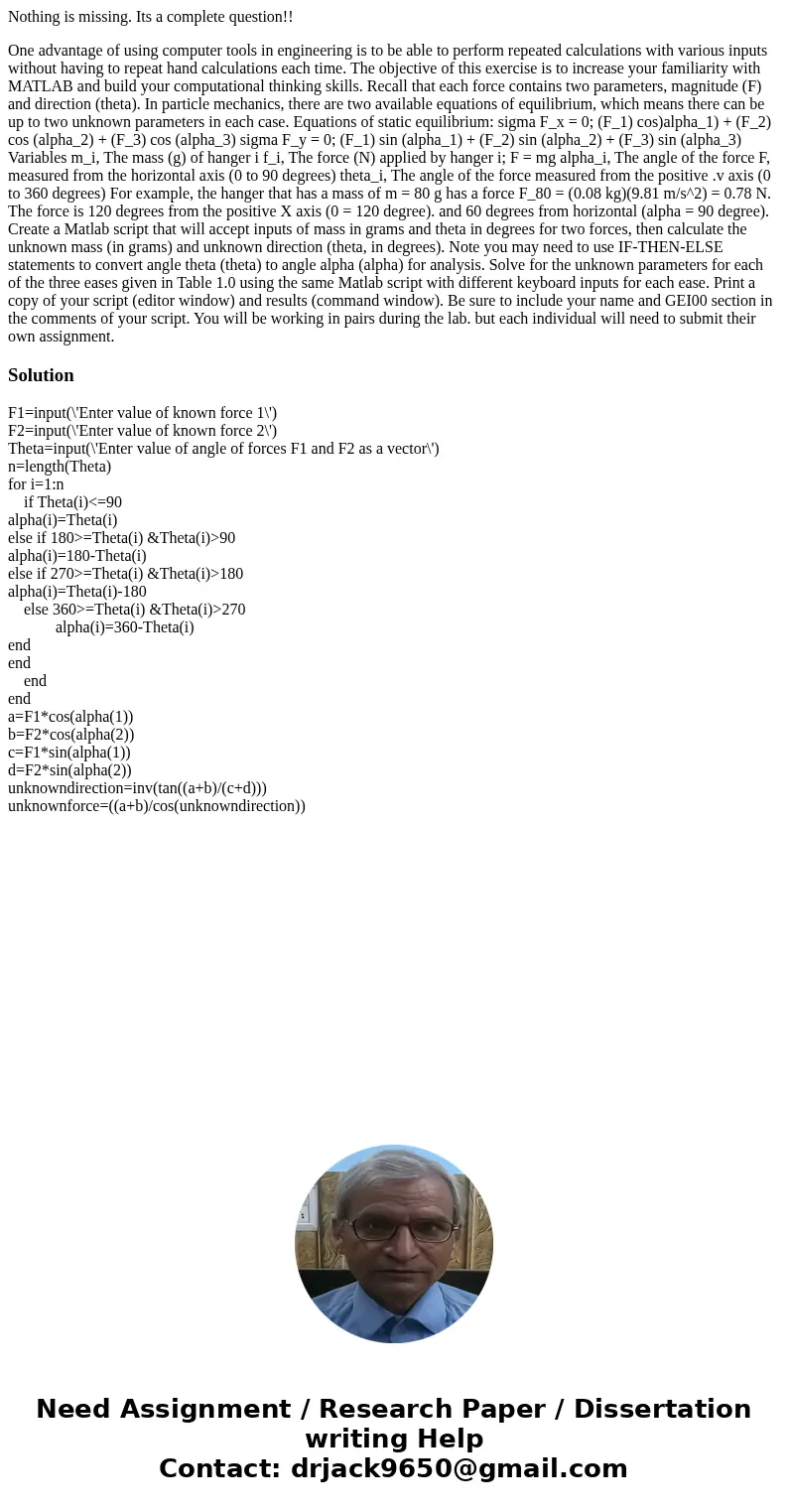Nothing is missing Its a complete question One advantage of
Nothing is missing. Its a complete question!!
One advantage of using computer tools in engineering is to be able to perform repeated calculations with various inputs without having to repeat hand calculations each time. The objective of this exercise is to increase your familiarity with MATLAB and build your computational thinking skills. Recall that each force contains two parameters, magnitude (F) and direction (theta). In particle mechanics, there are two available equations of equilibrium, which means there can be up to two unknown parameters in each case. Equations of static equilibrium: sigma F_x = 0; (F_1) cos)alpha_1) + (F_2) cos (alpha_2) + (F_3) cos (alpha_3) sigma F_y = 0; (F_1) sin (alpha_1) + (F_2) sin (alpha_2) + (F_3) sin (alpha_3) Variables m_i, The mass (g) of hanger i f_i, The force (N) applied by hanger i; F = mg alpha_i, The angle of the force F, measured from the horizontal axis (0 to 90 degrees) theta_i, The angle of the force measured from the positive .v axis (0 to 360 degrees) For example, the hanger that has a mass of m = 80 g has a force F_80 = (0.08 kg)(9.81 m/s^2) = 0.78 N. The force is 120 degrees from the positive X axis (0 = 120 degree). and 60 degrees from horizontal (alpha = 90 degree). Create a Matlab script that will accept inputs of mass in grams and theta in degrees for two forces, then calculate the unknown mass (in grams) and unknown direction (theta, in degrees). Note you may need to use IF-THEN-ELSE statements to convert angle theta (theta) to angle alpha (alpha) for analysis. Solve for the unknown parameters for each of the three eases given in Table 1.0 using the same Matlab script with different keyboard inputs for each ease. Print a copy of your script (editor window) and results (command window). Be sure to include your name and GEI00 section in the comments of your script. You will be working in pairs during the lab. but each individual will need to submit their own assignment.Solution
F1=input(\'Enter value of known force 1\')
F2=input(\'Enter value of known force 2\')
Theta=input(\'Enter value of angle of forces F1 and F2 as a vector\')
n=length(Theta)
for i=1:n
if Theta(i)<=90
alpha(i)=Theta(i)
else if 180>=Theta(i) &Theta(i)>90
alpha(i)=180-Theta(i)
else if 270>=Theta(i) &Theta(i)>180
alpha(i)=Theta(i)-180
else 360>=Theta(i) &Theta(i)>270
alpha(i)=360-Theta(i)
end
end
end
end
a=F1*cos(alpha(1))
b=F2*cos(alpha(2))
c=F1*sin(alpha(1))
d=F2*sin(alpha(2))
unknowndirection=inv(tan((a+b)/(c+d)))
unknownforce=((a+b)/cos(unknowndirection))

 Homework Sourse
Homework Sourse